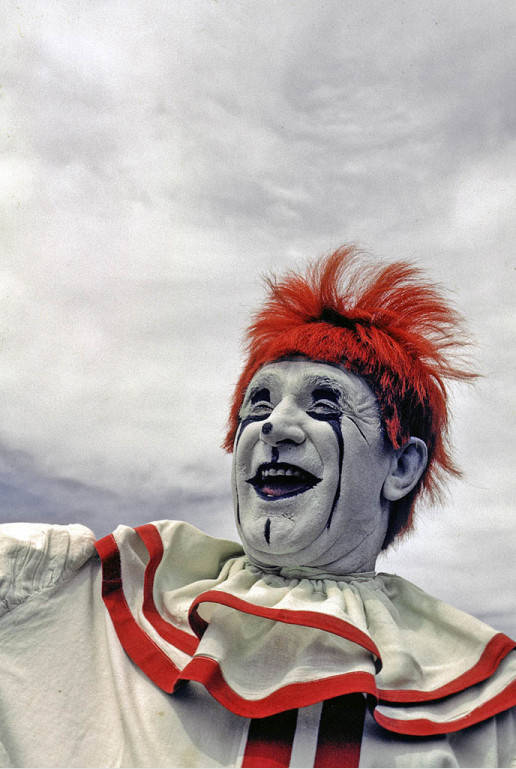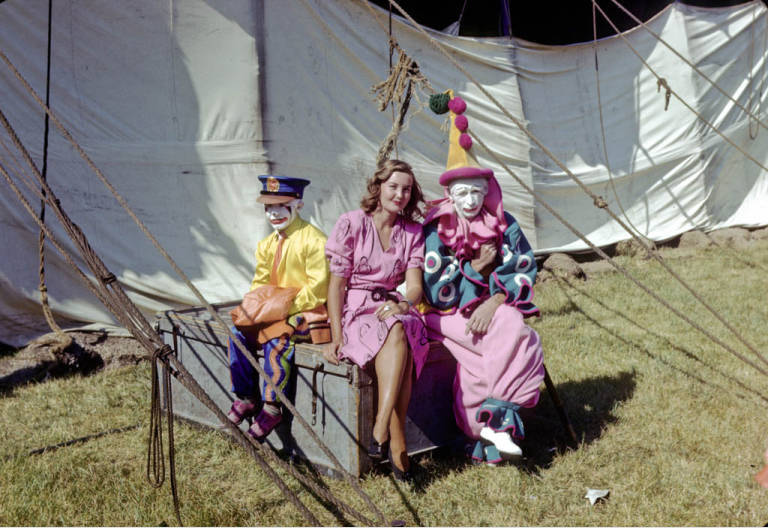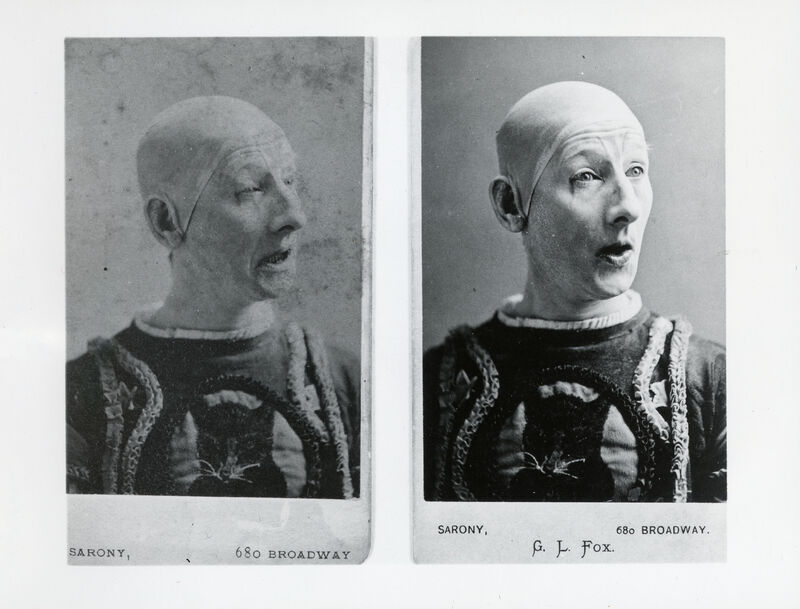20th Century Circuses in Illinois: Clowns
While today’s treatment of clowns in pop-culture leans into the more terrifying aspects, clowns were once primarily symbols of mirth. Throughout circus history, clowns have been an integral and iconic part of the show. They play many different roles and often represent the circus as a whole, capturing its energy of dedication as well as humor. Because of the intense physical nature of many circus acts—vaulting, trapeze, etc.—the clown acts often broke up the show and allowed the other performers to have a rest. Clowning was also a way for aging circus performers to remain at the circus—ex-contortionists and ex-aerialists often turned to clowning and continued their entertainment work in a different mode. Entertaining audiences with slapstick routines is perhaps what they are best known for, but clowns also played music, performed acrobatics, juggled, and danced.
In the earliest days of clowning, they primarily performed slapstick humor that involved fighting. In Roman times, a clown would brandish a “clunaculum,” which was a prop sword. In Slapstick and Dumbbell: A Casual History of Clowns and Clowning, a short book published in 1924, the author notes that “The slapstick has always been the clown’s principal guffaw-fetcher . . . No spoken joke is half so funny as a slapstick wallop” [4].
Clown Close-Up. Sverre O. Braathen, photographer. July 30, 1952. Illinois State University.
Although the typical image of a clown is most likely male, women were clowns as well—although it was certainly rarer. In 1869, one circus advertised Mrs. Lily Jane, “The ONLY FEMALE CLOWN that has ever been introduced before the American Public” [5]. Another woman, Miss Williams, became a clown by following in the footsteps of her father, who had himself been a clown for decades.
Female Clown Close-Up. Sverre O. Braathen, photographer. August 31, 1952. Illinois State University.
Classic circus clowns often fell into two different categories—the clown and the auguste. The clown was more refined, with elaborate makeup. The august, on the other hand, was more comical in dress and often did not have white face paint. These two types of clowns often performed together, playing off of one another. The auguste clown was typically the butt of the jokes.
Clowns and Performer Near Dressing Tent. Sverre O. Braathen, photographer. August 13, 1946.
Classic clown makeup is instantly recognizable, with its shockingly white base. During the 1800s, this makeup was concocted in a variety of different ways—some safer than others. White flour, lard, and eggs made up some early clown paint recipes, but later lead and zinc oxide were used to produce the iconic white hue. With regular use, this toxic makeup could leave performers with irritated or, in many cases, permanently damaged skin.
George Washington Lafayette Fox in two studies as clown. Sarony, creator/photographer. No date. University of Illinois at Urbana-Champaign Library.
[4] Hiler Harzberg, Slapstick and Dumbbell; a Casual Survey of Clowns and Clowning, (New York, J. Lauren, 1924), [9] http://archive.org/details/slapstickdumbbel00harz.
[5] S. L. Kotar and J. E. Gessler, The Rise of the American Circus, 1716-1899, (Jefferson, N.C: McFarland & Co, 2011), 193.




